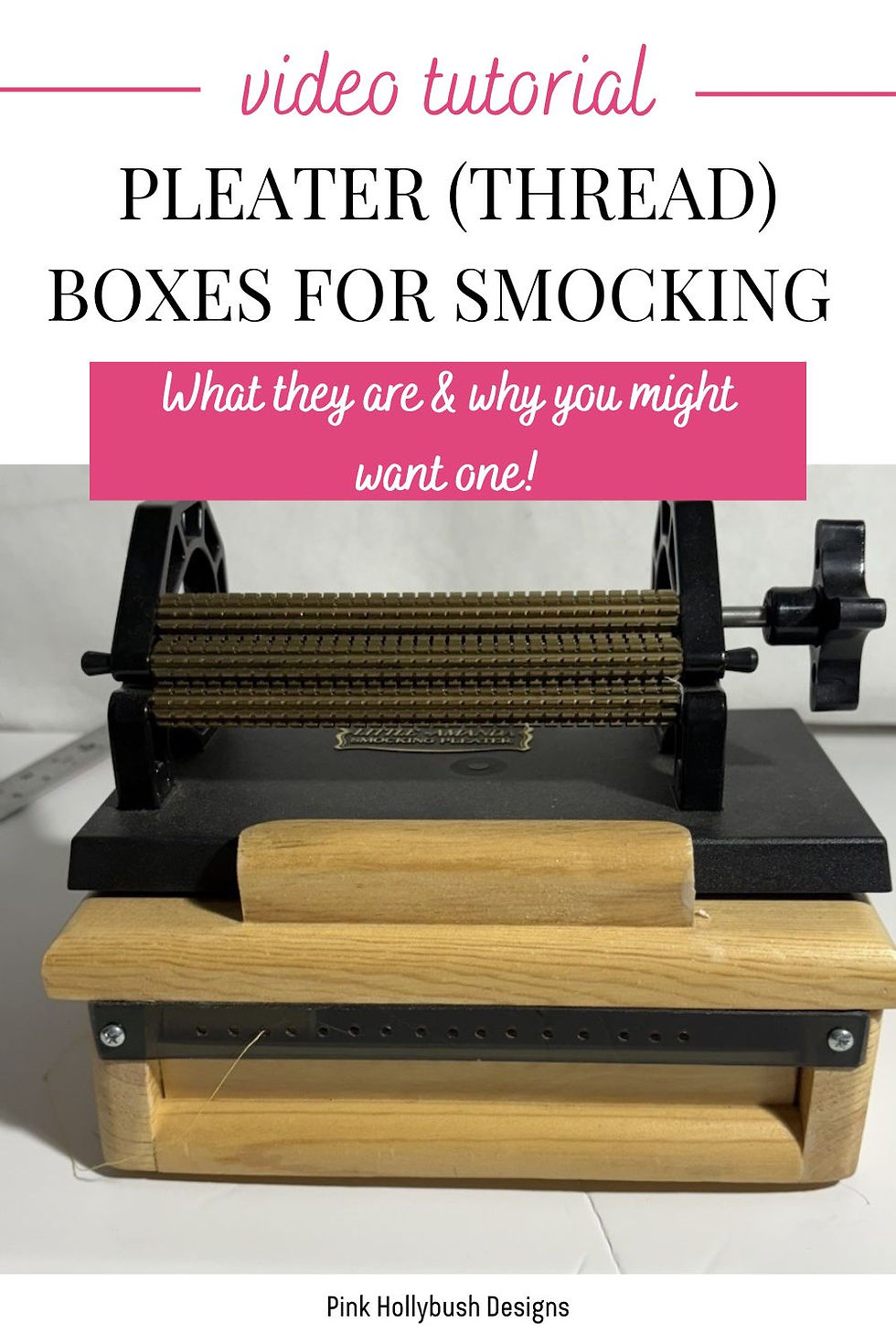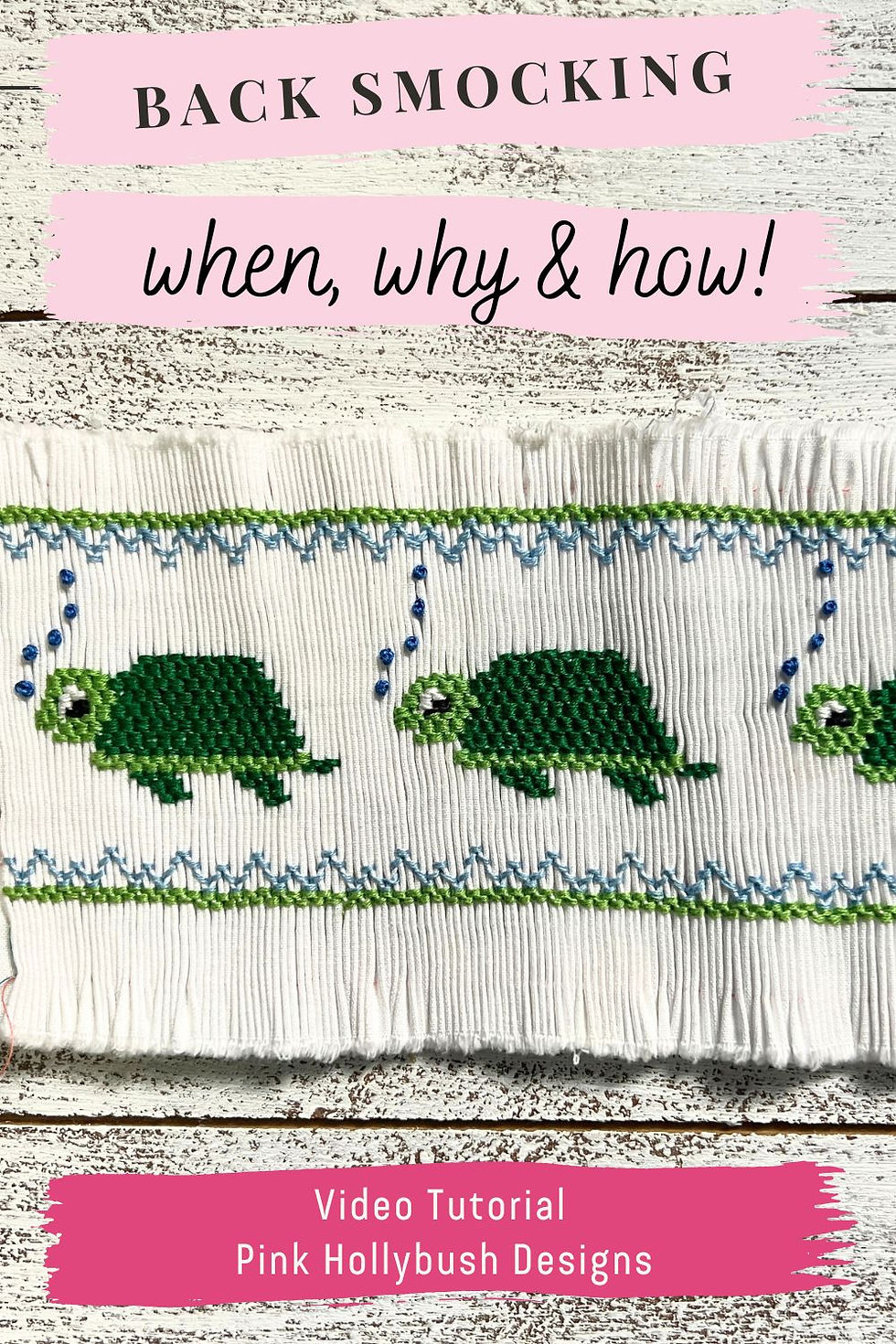Centering a Smocking Design
- Lisa Hawkes
- Mar 6, 2018
- 4 min read
Updated: Jun 4, 2022

This is the fifth of our Smocking: The Basics posts. Previous posts include the History of Smocking Part 1 and Part 2, Pleating Resources and How to Read a Smocking Graph. A video showing how to center the design can be found at the bottom of this post. If you are interested in smocking, please check out my Learn to Smock Course and free Get Started Smocking email series! Smocking by its very nature is geometric and in most cases, in order to be pleasing to the eye, needs to be centered. As I explained in How to Read a Smocking Graph, the graph should label the center of the design, or it might just be obvious by looking at the graph. Picture smocking designs will designate the number of pleats that the design covers, but you may have more or less pleats that you are smocking and therefore again need to center the design on the piece.
To find the center of the piece of fabric, fold the piece of fabric in half prior to pleating it and mark it by running a basting thread through the fabric, or marking the fabric with a removable marking pen. (See picture of this later in this post). Pleat the fabric and count the number of pleats out from the center to insure that you have the same number of pleats on either side.
Every smocking stitch covers 2 pleats, so most designs will cover an even number of pleats. (I am sure there is a design somewhere that covers an odd number so I won't say never, but most cover an even number). Count the pleats and remove one if needed so there is an even number. This also means that the center of the pleated fabric is a valley. If the mark on your fabric falls on the top of a pleat, remove the mark, and use the valley as the center. Next, determine the repeat of your design.

If we look at Findley again, we will see that the repeat of this design is determined by the Trellis/Cable combination between rows 5 and 6 1/2. The design begins on row 5 1/2 with a Down Cable, and covers 18 stitches before it begins to repeat. Ideally this design would be stitched over a number of pleats that is a multiple of 18 (for e.g. 90, 180,or 216) plus 2. The plus 2 is to finish the design with the final down cable.

Practically, the chances of the correct width of pleating being a multiple of 18 plus 2 is slim to none! If a smocking design has a small repeat, you can easily pull out a few pleats on either end of the fabric to get the correct multiple, but if you have to pull out 9 or 10 pleats, that can be significant width that you need for your garment.
At this point, I have pleated my fabric, found the center of the pleated piece (a valley) and made sure that I have the same number of pleats on either side of that valley. I have also determined that I don't have the exact multiple that I need for my design so I need to start stitching in the center of the pleated piece and work out to either side in order to center the design.

For Findley, I would begin at the center with the Up Cable on row 3 or the Up Cable on row 3 1/2.

I am right handed, so I will stitch the design from the center, all the way to the right edge of the pleated fabric. Below, the blue thread marks the center valley.

I will begin with the Up Cable that crosses the center valley.

I will stitch the design to the right edge of the fabric and tie off.

I will turn my work upside down, return to the center and bring my needle up in the center valley.

I will continue smocking to the other edge of the fabric.

Here is the finished piece still upside down. (You can tell this because you know how to read the smocking graph!) You may have noticed that while my design is centered, I didn't have enough pleats to complete the 3 cable combination. As mentioned above, you often won't have the perfect number of pleats to finish the design. The design should end with a Cable stitch rather than a traveling stitch such as a Trellis Stitch. The pleats are held in place better if the beginning and ending stitches are Cable stitches. If I were stitching Findley and couldn't get that magic multiple of 18 plus 2, I would include as many of the complete Trellis/Cable combinations that would fit and then Cable or Cable/Wave to the end of the piece, making sure that I ended with a Cable Stitch. I hope this explains how to center your design. Happy Smocking!
UPDATE: I have made a video demonstrating this and here it is!




